
Roots
The story of our strands, particularly for those with textured hair, is often far richer and more intricate than mere biology suggests. It holds whispers of lineage, echoes of cultural practice, and the quiet weight of societal expectation. To truly comprehend the enduring psychological impacts of hair suppression, one must first look beyond the surface, delving into the very foundations of how hair connects to identity and well-being. It is a journey into the deeply personal landscape of self-perception, where the choices we make about our hair, or the choices that feel imposed upon us, leave indelible marks upon the spirit.
Hair, in its most elemental form, serves as a visible extension of self. For individuals with textured hair, this connection runs particularly deep, rooted in centuries of cultural significance. Before the widespread imposition of Eurocentric beauty standards, hair was a language unto itself, communicating social standing, marital status, tribal affiliation, and even spiritual beliefs.
The act of tending to hair was a communal ritual, a moment of connection and affirmation. The suppression of these natural forms, whether through chemical alteration, relentless heat, or rigid styling mandates, thus became more than a cosmetic shift; it was a quiet, yet potent, severance from a part of one’s authentic self and a rich heritage.

Anatomy and Physiology of Textured Hair
Understanding the physical architecture of textured hair is paramount to grasping the challenges inherent in its suppression. Unlike straight hair, which typically has a round cross-section, textured hair exhibits an elliptical or even flattened cross-section, contributing to its characteristic curl, coil, or kink pattern. The follicle itself often curves, dictating the direction of growth and the unique twists and turns of each strand. This morphology also means that natural oils produced by the scalp find it more challenging to travel down the hair shaft, leading to a predisposition for dryness.
The very structure of textured hair, with its numerous bends and turns, creates points of vulnerability where strands can be more susceptible to breakage. Chemical processes, such as relaxers, work by permanently altering the disulfide bonds within the hair’s protein structure, forcing the hair into a straightened form. This chemical intervention, while achieving a desired aesthetic, fundamentally compromises the hair’s integrity, often leading to thinning, damage, and even permanent hair loss over time. The physical toll of these processes can manifest as scalp irritation, chemical burns, and hair fragility, creating a cycle of damage that requires constant intervention and care.
The intrinsic structure of textured hair, with its elliptical cross-section and curving follicle, inherently predisposes it to unique care requirements and sensitivities.

Textured Hair Classification Systems
The diverse spectrum of textured hair has led to various classification systems, most notably the Andre Walker Hair Typing System, which categorizes hair from Type 1 (straight) to Type 4 (coily), with sub-classifications (a, b, c) denoting increasing tightness of the curl pattern. While these systems offer a helpful vocabulary for describing hair, they can inadvertently contribute to a hierarchy of desirability, where looser curl patterns are sometimes perceived as more “manageable” or “good” hair, a concept rooted in historical biases. This societal valuing of certain textures over others can subtly, or overtly, push individuals towards suppression practices.
- Type 1 Hair ❉ Characterized by a straight texture, with no natural curl.
- Type 2 Hair ❉ Ranges from wavy to loose curls, often with an S-shape pattern.
- Type 3 Hair ❉ Defined by distinct curls, from loose spirals to tight corkscrews.
- Type 4 Hair ❉ Includes tight coils and zig-zag patterns, often with significant shrinkage.
The language used to describe textured hair carries significant weight. Terms like “nappy” or “unruly,” historically applied to Type 4 hair, carry negative connotations that contribute to internalized perceptions of inadequacy. When external messaging consistently devalues one’s natural texture, the psychological impulse to suppress that texture can become deeply ingrained. This internalized pressure can lead to a disconnection from one’s authentic self, impacting self-esteem and confidence from a young age.

Hair Growth Cycles and Influencing Factors
Hair growth occurs in cycles, each strand undergoing phases of active growth (anagen), transition (catagen), and rest (telogen), before shedding. The duration of these phases varies among individuals and hair types. For textured hair, practices that suppress its natural form, such as tight pulling styles or chemical relaxers, can interfere with these cycles, leading to conditions like traction alopecia or chemical burns that damage the follicle. When the follicle is damaged, the hair’s ability to regrow healthily is compromised, sometimes permanently.
Factors beyond genetics, such as diet, stress, and hormonal fluctuations, also play a significant role in hair health and growth. A person under chronic stress due to societal pressures to alter their hair might experience increased shedding or thinning. The emotional burden of conforming to an imposed standard can manifest physically, creating a tangible link between psychological well-being and hair vitality. This reciprocal relationship means that the enduring impacts of suppression extend beyond appearance, affecting the very biological processes that sustain hair.
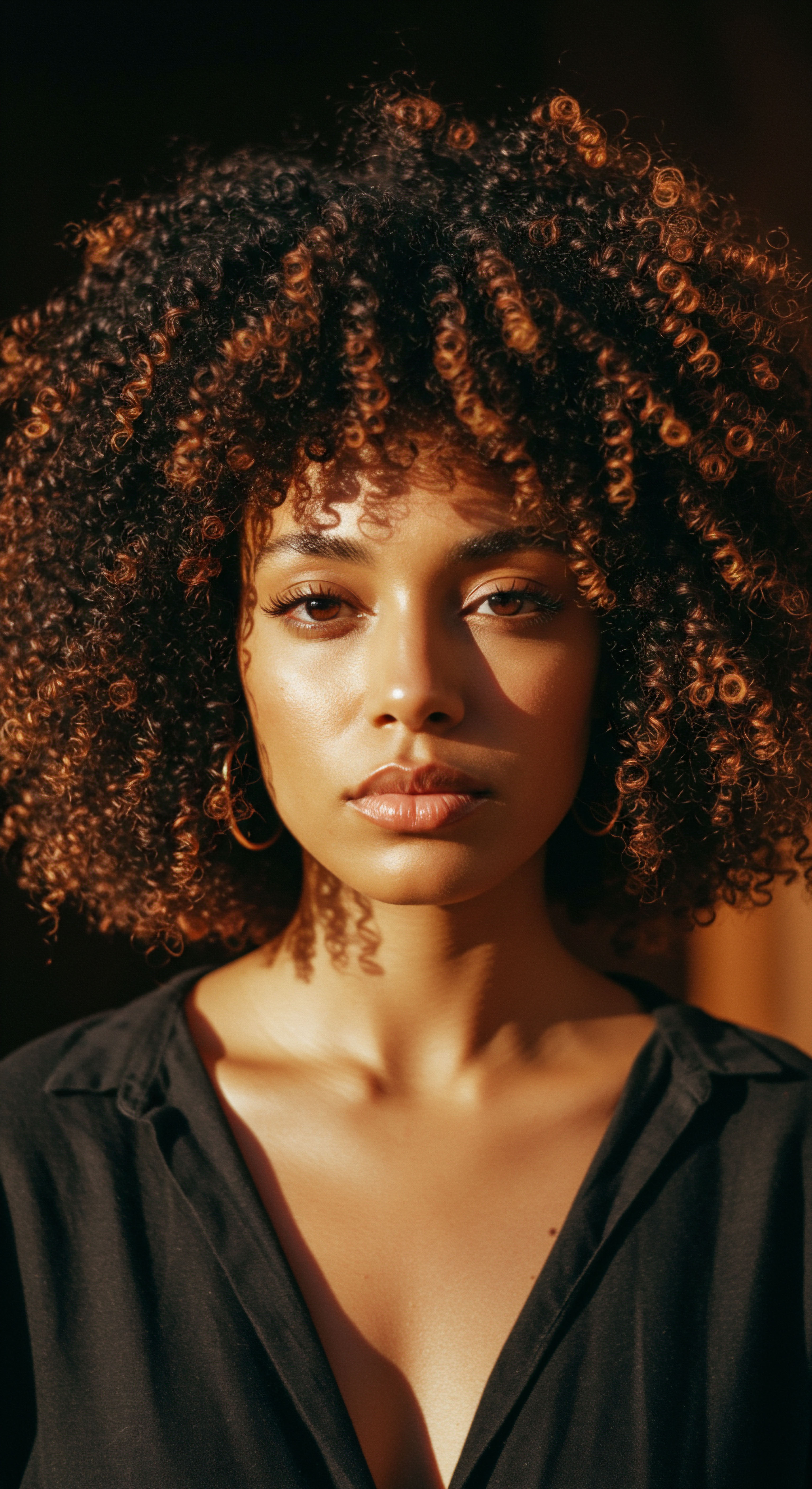
Ritual
Stepping into the realm of ritual, we consider the daily practices and deeper significances that shape our interaction with hair. For many, hair care is not merely a routine; it is a profound act of self-connection, a quiet conversation between self and strand. When hair suppression becomes a central theme in this interaction, these rituals transform, sometimes becoming acts of arduous conformity rather than expressions of self-care. The practical wisdom sought in nurturing one’s hair becomes overshadowed by the pursuit of an altered aesthetic, leading to a complex interplay of physical and emotional consequences.
The enduring psychological impacts of hair suppression are often cemented through these repeated, often painful, rituals. The desire to achieve a particular look, frequently influenced by dominant beauty standards, can lead individuals to subject their hair to treatments that compromise its health and, by extension, their own sense of self-acceptance. The choices made in the name of hair presentation become deeply intertwined with perceptions of belonging, professionalism, and beauty.

Protective Styling Encyclopedia
Protective styles, designed to shield delicate ends and minimize manipulation, hold a unique place in textured hair care. Styles like braids, twists, and cornrows, when executed properly, can aid in length retention and reduce breakage. However, when these styles are used to “suppress” the natural texture, often by being pulled excessively tight or left in for too long, they can cause significant physical damage, notably traction alopecia.
The psychological burden here arises from the desire for a “neat” or “tamed” appearance, sometimes at the expense of comfort and hair health. The constant tension on the scalp can be a source of chronic discomfort, a physical manifestation of the mental strain to conform.
Protective styles, while beneficial for hair health, can become tools of suppression when used to forcibly alter natural texture or to meet external aesthetic demands.
The very term “protective” can become ironic when styles are applied with excessive tension, leading to irreversible hair loss along the hairline. This loss is not just physical; it carries a significant emotional weight, affecting self-image and confidence. Individuals may feel a profound sense of grief over the loss of their hair, further deepening the psychological scars left by suppression.

Natural Styling and Definition Techniques
The journey towards embracing natural texture often involves learning various styling and definition techniques, from wash-and-gos to twist-outs. These methods celebrate the hair’s inherent curl pattern, allowing it to take its authentic form. The psychological shift that accompanies this embrace is profound ❉ a move from battling one’s hair to celebrating it.
However, the path to self-acceptance with natural hair is not always smooth. Societal messages, often subtle, can still convey that certain natural styles are less “professional” or “polished.” This external judgment can create internal conflict, even for those committed to their natural hair.
The psychological impact of this external scrutiny can manifest as anxiety about hair presentation in professional or social settings. The effort to define curls perfectly or achieve a certain level of “neatness” can become another form of self-imposed suppression, driven by a desire for acceptance. The freedom of natural hair can, at times, feel like a new set of rules to navigate, albeit rules chosen by the individual rather than imposed from outside.

Heat Styling and Thermal Reconditioning
Heat styling, such as flat ironing or blow-drying, offers a temporary alteration of hair texture. Thermal reconditioning, a more permanent chemical process, similarly aims to straighten textured hair. While these techniques can offer versatility, their repeated or improper application can lead to significant heat damage, altering the hair’s natural curl pattern permanently. This damage, often referred to as “heat training,” can leave hair limp, brittle, and unable to revert to its original state.
The psychological consequence of heat damage is often a sense of loss and frustration. Individuals who once had vibrant, coily hair may find themselves with weakened, straightened strands that no longer hold their natural shape. This can be particularly distressing for those who are attempting to transition back to their natural texture, finding that the damage makes a full return impossible. The pursuit of a temporarily straight aesthetic, therefore, can have a lasting psychological cost, leaving individuals with a hair texture that feels neither truly natural nor truly desired.
| Practice Chemical Relaxing |
| Primary Physical Impact Permanent alteration of hair bonds, breakage, scalp burns, hair loss |
| Potential Psychological Impact Identity conflict, self-hatred, anxiety about appearance, grief over hair loss |
| Practice Tight Protective Styles |
| Primary Physical Impact Traction alopecia, scalp irritation, breakage |
| Potential Psychological Impact Pain tolerance, anxiety about "neatness," fear of judgment, reduced self-esteem |
| Practice Frequent Heat Styling |
| Primary Physical Impact Heat damage, altered curl pattern, dryness, brittleness |
| Potential Psychological Impact Frustration, sense of loss, difficulty accepting natural texture, body image concerns |
| Practice These practices, while offering temporary aesthetic changes, often carry significant and enduring psychological burdens. |

The Complete Textured Hair Toolkit
The tools we use for hair care are more than mere implements; they are extensions of our care philosophy. For textured hair, the right tools can make a significant difference in minimizing damage and promoting health. Wide-tooth combs, detangling brushes, and silk bonnets are not just accessories; they are components of a gentle approach to hair. Conversely, tools designed for aggressive straightening or excessive tension can contribute to the physical aspects of hair suppression, reinforcing a mindset that views natural texture as something to be conquered.
The investment in specific tools and products can also represent a psychological commitment. Choosing products that celebrate natural texture over those designed for chemical alteration marks a shift in perspective. Yet, the sheer volume of information and products available can sometimes feel overwhelming, leading to a different kind of pressure ❉ the pressure to have the “perfect” regimen or the “best” products. This pursuit, while seemingly benign, can still contribute to feelings of inadequacy if desired results are not achieved, perpetuating a subtle form of psychological strain related to hair.

Relay
What deep societal currents shape our relationship with hair, compelling some to conceal their natural forms? The answer extends far beyond personal preference, reaching into the profound interplay of history, cultural expectation, and the very architecture of identity. This section endeavors to illuminate the less apparent complexities of hair suppression, drawing upon insights from various fields to paint a comprehensive picture of its enduring psychological weight. Here, science, cultural memory, and individual experience converge, offering a deeper understanding of the burdens carried by those who have felt compelled to alter their hair.
The psychological impacts of hair suppression are not isolated incidents but rather cumulative effects, passed down through generations, shaped by systemic pressures, and internalized from a young age. To genuinely comprehend this phenomenon, one must look at the historical context, the societal biases, and the very real mental health consequences that arise from the pressure to conform.

Historical Echoes and Cultural Narratives
The history of textured hair suppression is inextricably linked to periods of colonization and slavery, where African hair was systematically devalued and deemed “unprofessional” or “unruly” in contrast to Eurocentric beauty ideals. This historical context established a deeply entrenched societal bias that continues to reverberate. Generations learned, implicitly and explicitly, that acceptance, upward mobility, and even safety could depend on altering one’s natural hair. This created a profound internal conflict ❉ the desire for belonging clashing with the innate self.
Cultural narratives, passed down through families and communities, often reinforced these pressures. Mothers and grandmothers, themselves products of a society that privileged straightened hair, might have encouraged chemical relaxers or tight braiding styles, believing these practices offered their children a better chance at success and acceptance. While born of love and protection, these actions inadvertently perpetuated the cycle of suppression, embedding the psychological burden deeper within the collective consciousness. The “good hair” versus “bad hair” dichotomy, still present in many communities, serves as a painful reminder of this internalized bias.
The historical devaluation of textured hair during periods of colonization established a persistent societal bias, compelling generations to alter their natural forms for acceptance.
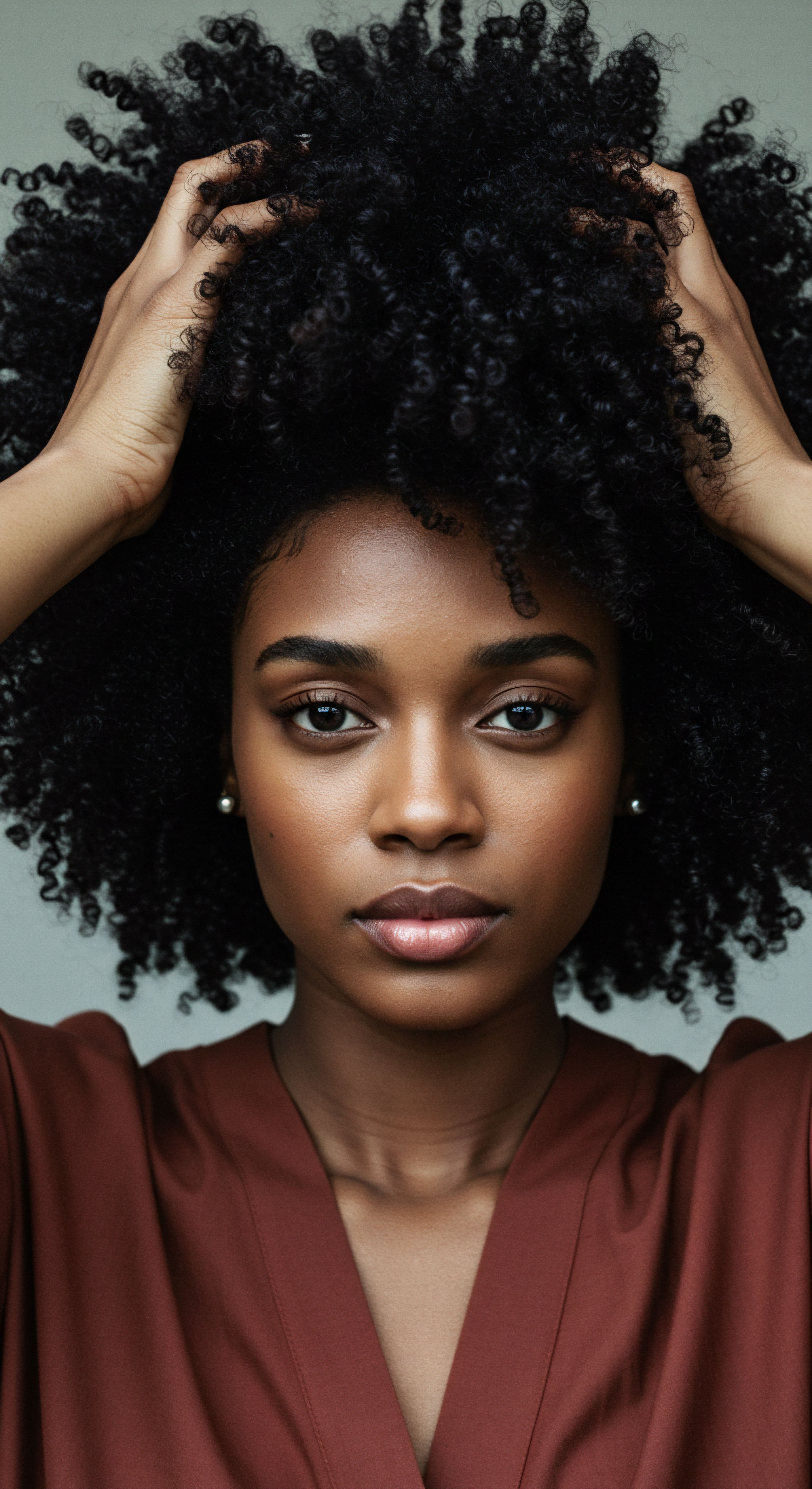
Societal Bias and Mental Well-Being
The enduring psychological impact of hair suppression is vividly demonstrated by research on hair discrimination. Studies show that societal bias against natural Black hairstyles can infiltrate workplaces and educational settings, perpetuating race discrimination. Ashleigh Shelby Rosette, a management professor at Duke University’s Fuqua School of Business, conducted research showing that Black women with natural hairstyles were often perceived as less professional and less likely to be recommended for interviews compared to Black women with straightened hair, particularly in industries with conservative appearance norms.
In one experiment, job candidates with straight hair were rated as more “polished, refined, and respectable,” and more strongly recommended for interviews. This data point underscores the tangible external pressures that lead to suppression and the very real career and social consequences.
The mental health consequences stemming from such discrimination are substantial. They include internalized racism and negative self-image, anxiety about how others perceive hair, chronic stress in academic or professional spaces, and a sense of cultural disconnection. The constant need to manage one’s appearance to avoid discrimination can lead to hypervigilance and a diminished sense of belonging. The act of straightening hair, often a physically damaging process, becomes a coping mechanism, a shield against judgment, but one that comes at a significant psychological cost.

The Weight of Conformity
The psychological burden of conformity extends to daily life. Individuals may feel a persistent need to justify their hair choices or to apologize for their natural texture. This constant self-monitoring can lead to heightened anxiety and a feeling of inauthenticity.
The emotional toll of these experiences is often unspoken, a silent struggle against deeply ingrained societal norms. The pressure to conform is not simply about aesthetics; it reaches into self-worth and belonging.
Consider the phenomenon of “hair-bullying” in schools, where children are disciplined or ridiculed for natural, culturally significant hairstyles. These early experiences teach children that their authentic selves are “inappropriate,” contributing to long-term self-image issues and identity suppression. The psychological injuries sustained in childhood can persist into adulthood, affecting confidence and social interactions.

Identity and Self-Perception
Hair is deeply intertwined with self-identity, particularly for Black women. When hair is suppressed, a part of that identity is also suppressed. This can lead to a fragmented sense of self, where the external presentation does not align with the internal feeling.
The journey to reclaim natural hair is often described as a path to authenticity and self-acceptance, but it is a path often fraught with internal and external challenges. The psychological significance of hair means that changes in its appearance, whether voluntary or imposed, can profoundly affect how individuals see themselves.
The concept of “hair-esteem” has emerged as a specific measure of how one feels about their hair, directly correlating with overall self-esteem. When individuals feel compelled to alter their hair to meet external standards, their hair-esteem can suffer, leading to broader psychological distress. The decision to suppress one’s hair can be a deeply personal one, yet it is rarely made in a vacuum, always influenced by the societal mirror reflecting back ideals that may not align with one’s natural state.
- Self-Image Disruption ❉ The forced alteration of hair can lead to a disconnect between internal identity and external presentation.
- Internalized Bias ❉ Repeated negative messages about natural hair can result in individuals adopting those biases themselves.
- Anxiety and Stress ❉ Constant concern over hair’s appearance and potential discrimination can cause chronic psychological strain.
- Cultural Disconnection ❉ Suppressing natural hair can feel like a severing of ties to cultural heritage and community.
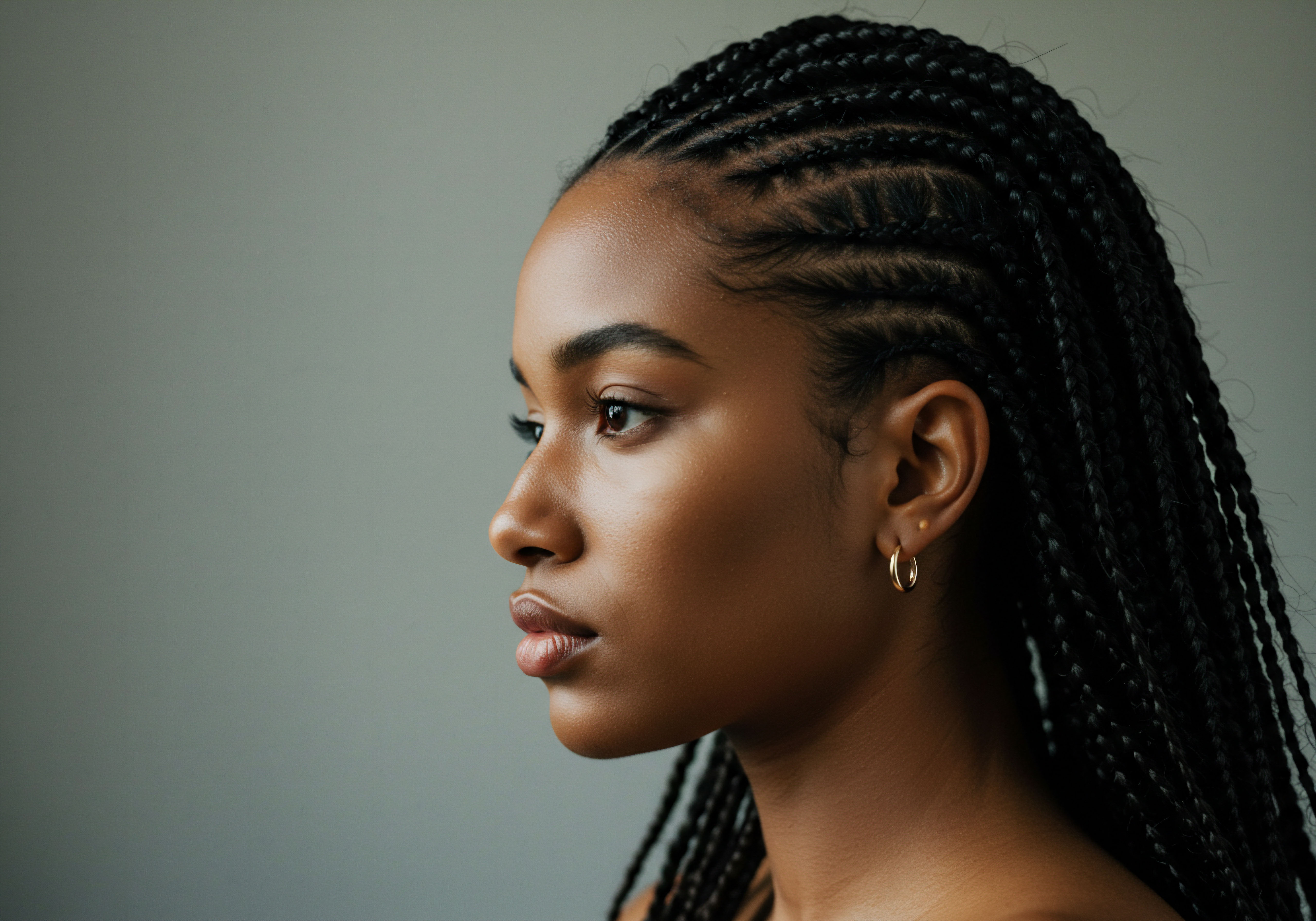
Intergenerational Impact and Healing
The psychological impacts of hair suppression are not confined to the individual but are often relayed across generations. Children observe the choices and struggles of their parents and elders, absorbing the implicit lessons about hair and acceptance. This intergenerational transmission of beauty standards and coping mechanisms means that the burden of suppression can continue even as societal norms begin to shift.
Healing from these enduring impacts requires a conscious effort to dismantle internalized biases and to celebrate the diversity of textured hair. This involves education, affirmation, and the creation of spaces where natural hair is not only accepted but revered. The growing natural hair movement is, in itself, a powerful act of collective psychological reclamation, a testament to the resilience of identity in the face of historical pressure. It is a slow, steady process of re-educating the eye and the spirit, both individually and collectively, to see beauty in every curl, coil, and kink.
| Generation Older Generations (e.g. Grandparents) |
| Dominant Suppression Method Chemical relaxers, tight styling for "neatness" |
| Key Psychological Burden Deep internalization of "good hair" ideals, fear of social/professional exclusion, self-sacrifice for acceptance. |
| Generation Middle Generations (e.g. Parents) |
| Dominant Suppression Method Continued relaxer use, early heat styling, pressure to conform in schools/workplaces |
| Key Psychological Burden Anxiety about children's acceptance, balancing personal identity with societal demands, navigating transition. |
| Generation Younger Generations (e.g. Children/Youth) |
| Dominant Suppression Method Hair-bullying, school uniform policies, social media pressure for specific aesthetics |
| Key Psychological Burden Early self-image issues, identity negotiation, anxiety over peer acceptance, resilience building. |
| Generation The burden of hair suppression shifts in manifestation but remains a persistent psychological challenge across different age groups. |
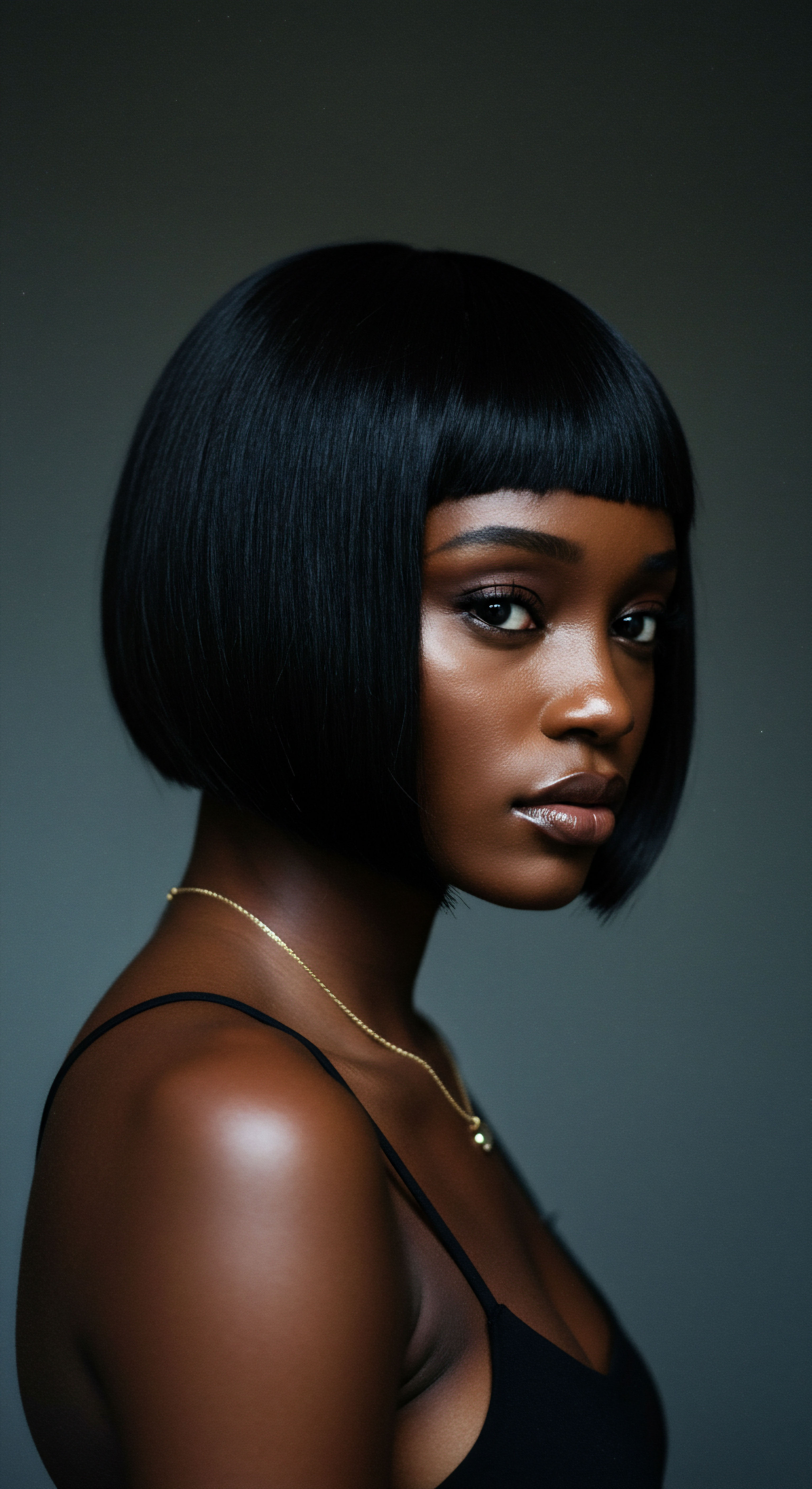
Reflection
The journey through the enduring psychological impacts of hair suppression unveils a landscape rich with historical echoes, societal pressures, and profound personal narratives. It is a testament to the resilience of the human spirit and the deep connection between our outer presentation and inner well-being. Understanding these complexities invites us to move beyond superficial judgments of appearance, encouraging a more empathetic and informed appreciation for the diverse beauty that exists within the world of textured hair. The path forward lies in collective recognition, fostering environments where authenticity is not merely tolerated, but truly celebrated, allowing every strand to tell its own serene, unburdened story.
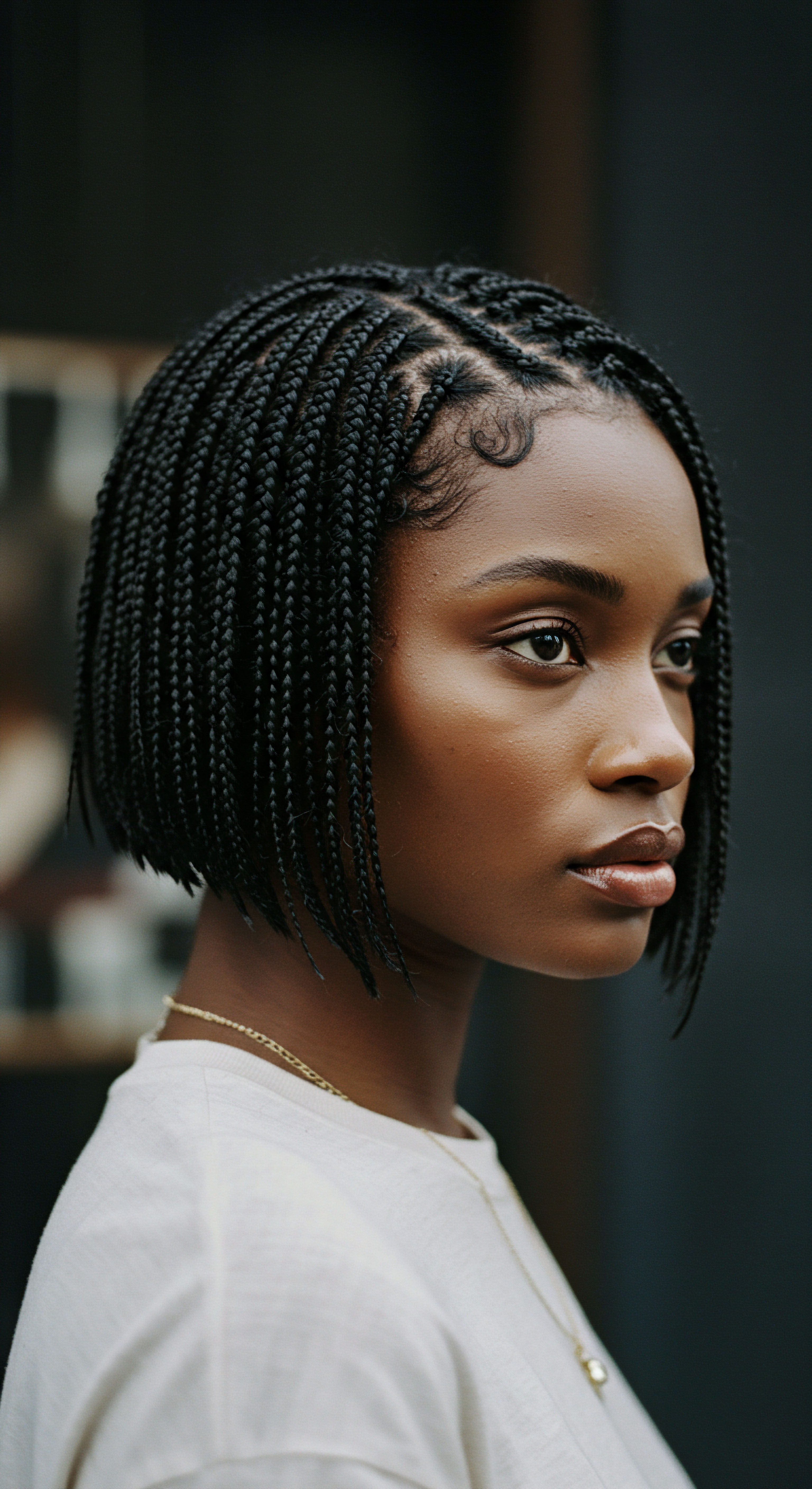
References
- Maharaj, C. (2025). Beyond the roots ❉ exploring the link between black hair and mental health. TRIYBE Research and Community Dialogues.
- Johnson, T. A. & Bankhead, T. (2014). Hair It Is ❉ Examining the Experiences of Black Women with Natural Hair. Open Journal of Social Sciences, 2(10), 86-100.
- Rosette, A. S. (2020). Research Suggests Bias Against Natural Hair Limits Job Opportunities for Black Women. Duke’s Fuqua School of Business.
- Lashley, M. (2018). The importance of hair in the identity of Black people. Érudit.
- Rowe, K. L. (2023). Black Hair and Hair Texture ❉ Cultivating Diversity and Inclusion for Black Women in Higher Education. Emerald Insight.
- Mbilishaka, A. M. & Clemons, A. (2020). Don’t Get It Twisted ❉ Untangling the Psychology of Hair Discrimination Within Black Communities. ResearchGate.
- Rodriguez, I. (2024). Hair Texture and Its Influence. Hope College Digital Commons.
- Opie, T. & Phillips, S. W. (2015). Let My Hair Be Me ❉ An Investigation of Employee Authenticity and Organizational Appearance Policies Through the Lens of Black Women’s Hair. Fashion Studies, 1(1), 1-28.
- McFarquhar, T. & Lowis, M. J. (2000). The Effect of Hairdressing on the Self-Esteem of Men and Women. ResearchGate.
- Thomas, T. (2013). “Hair” They Are ❉ The Ideologies of Black Hair. York College CUNY.